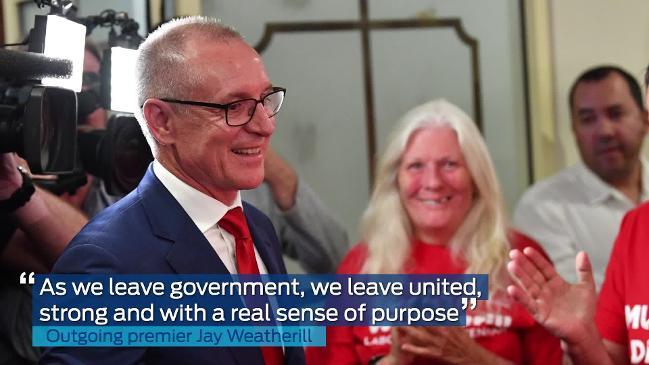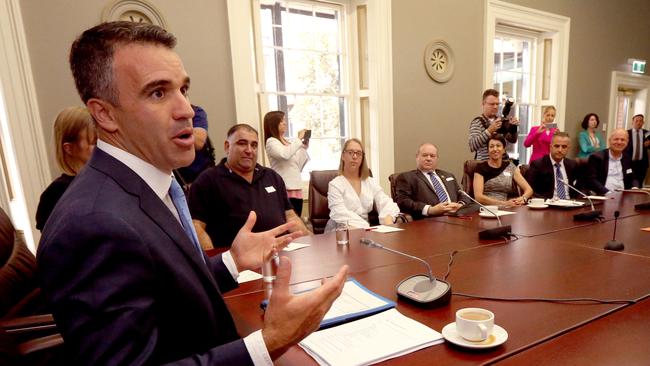How the SA Liberals won the 2018 election: Modern technology and old-school tactics
OLD-fashioned shoe leather, combined with the most sophisticated modern campaign technology, found the Liberals a path to victory and their first election win in two decades.

SA 2018
Don't miss out on the headlines from SA 2018. Followed categories will be added to My News.
- ELECTION HQ: All the latest news and analysis
- Introducing your (likely) new Cabinet
- What to expect in Marshall’s first 100 days
- Vickie’s climb to make history in SA
OLD-fashioned shoe leather, combined with the most sophisticated modern campaign technology, found the Liberals a path to victory and their first election win in two decades.
It’s been a long winter for SA Liberals. Despite winning the popular vote at elections in 2010 and 2014, they fell humiliatingly short of the seats needed to win. This election was a complete inversion.
The Liberal vote went backwards, as their seat count surged.
Senior party insiders told The Advertiser their new data-driven approach, led by a new software system that was critical to delivering an unlikely win for US President Donald Trump in key states, was essential to ensuring they won votes where it counted.
The i360 program sucks down data from a range of publicly available sources including social media and produces fine-grain profiles of where to find swinging voters and the issues key to them.

From there, candidates are directed to make contact with households that will be critical to the result, and can even be tracked by GPS to make sure they knock on all the doors.
One campaign insider said the software gave the party an ability to direct old-fashioned campaign tactics with a laser-like focus.
“The basics are the same,” the insider said. “It’s about working out what voters want, talking to them about it and offering solutions. In that sense, nothing much has changed.
“But this means you can now hit all the doors that are going to swing the difference.”
Opposition Leader Steven Marshall has also been public about his delivery of micro messages that appeal to individual voters’ particular interests, to go with a “slogan and billboard” pitch for all voters.

Liberals also credit Mr Marshall’s decision to rule out a deal with SA Best leader Nick Xenophon early in the campaign as a pivotal moment.
New boundaries created since the last election gave the Liberals 25 seats on paper, and government if everyone voted the same way at this election as they did in 2014. With the Labor government a further four years older and battered by scandals, the Liberals had high confidence by the middle of last year of a strong victory.
However, Mr Xenophon’s entrance to the race in October badly exposed their foundations as he threatened half a dozen or more seats. Liberals then set about beating back Mr Xenophon, confident they were strong in the Labor-held seats needed for a majority.
One senior Liberal said that Mr Xenophon’s year-ending interview with The Advertiser, when he pointedly refused to rule out accepting the job of premier after the election, was a key moment.
“People started looking at him in a very different way,” the source said. “Then he started running candidates in enough seats that he could be the premier and released that stupid ad. It just looked to people that he wasn’t up to the serious job of government.”
Another Liberal said: “This time, we actually ran a proper campaign that delivered it for them.”


